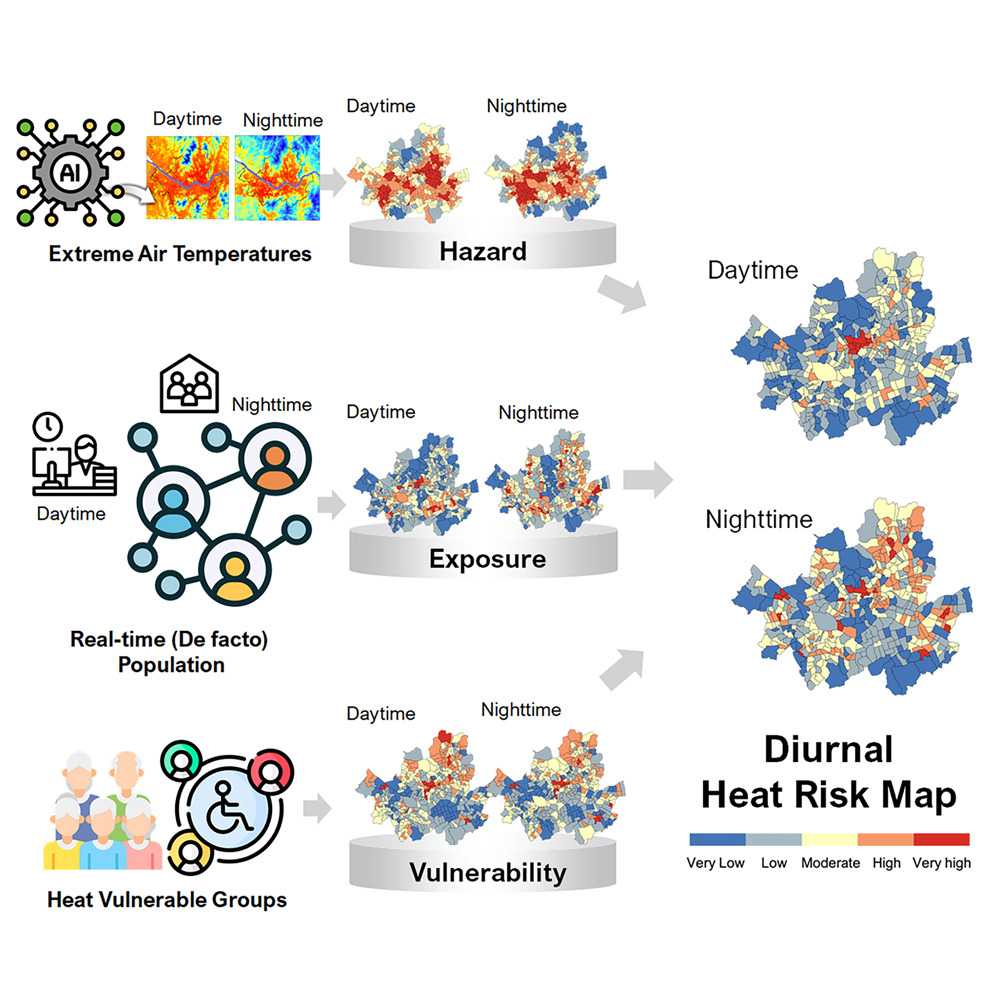A groundbreaking technology has been developed to assess the risk of summer heat waves, providing essential data for mitigating risks associated with heat-related illnesses. Professor Jungho Im and his research team in the Department of Civil, Urban, Earth, and Environmental Engineering at UNIST has successfully employed artificial intelligence (AI) to create a heat wave risk map by analyzing high-resolution daily temperature data in the capital city.
As climate change leads to an increase in the frequency and duration of heat waves, it has become a pressing global issue. Urban areas are particularly vulnerable to the detrimental effects of heat waves, necessitating the establishment of effective policies and action plans. Previous studies primarily relied on satellite-based surface temperatures and resident population data, which failed to accurately capture the actual air temperature experienced by people and the population's exposure patterns.

Diurnal heat risk map, developed by Professor Jungho Im and his research team in the Department of Civil, Urban, Earth, and Environmental Engineering at UNIST.
The research team's innovative approach produced a diurnal heat wave risk map for Seoul, distinguishing between daytime and nighttime risks. The map revealed a relatively high risk in the downtown area during the day, where population activities are concentrated, and a dispersed risk in the city's periphery at night. Remarkably, the "Day Risk Map" developed by the team demonstrated a high correlation (R=0.8) with data on the distribution of heat-related diseases in Seoul during the summer of 2018.
Unlike previous studies that relied on surface temperature and resident population data, the technology developed by the research team utilized AI to identify the highest and lowest daily temperatures. This enables real-time analysis of the population's exposure to heat waves and serves as a realistic indicator of heat wave risks.
Lead researcher Cheolhee Yoo, the first author of the study, stated, "The developed technology can provide real-time information about dangerous areas during summer heat waves," adding, "It can effectively analyze heat wave risks not only in Seoul but also in various cities worldwide."
Professor Jungho Im emphasized, "The AI-based heat wave risk assessment technology developed in this study is expected to greatly assist in establishing realistic and effective action plans to mitigate heat-related risks. Furthermore, it can serve as a fundamental technology for assessing and responding to cold wave risks."
This research was supported by the Korea Meteorological Administration's long-term source technology research project in the heat wave field, the Ministry of Environment's technology development project to build a digital environmental health survey foundation, and the Korea Research Foundation's basic research project of the Ministry of Science and ICT. The study was published online on October 3 in iScience, a sister publication of the renowned journal Cell, and will be featured in the November issue of iScience.
Journal Reference
Cheolhee Yoo 1 2, Jungho Im 3 5, Qihao Weng, et al., Diurnal Urban Heat Risk Assessment: Using Extreme Air Temperatures and Real-Time Population Data in Seoul, iScience, (2023).






